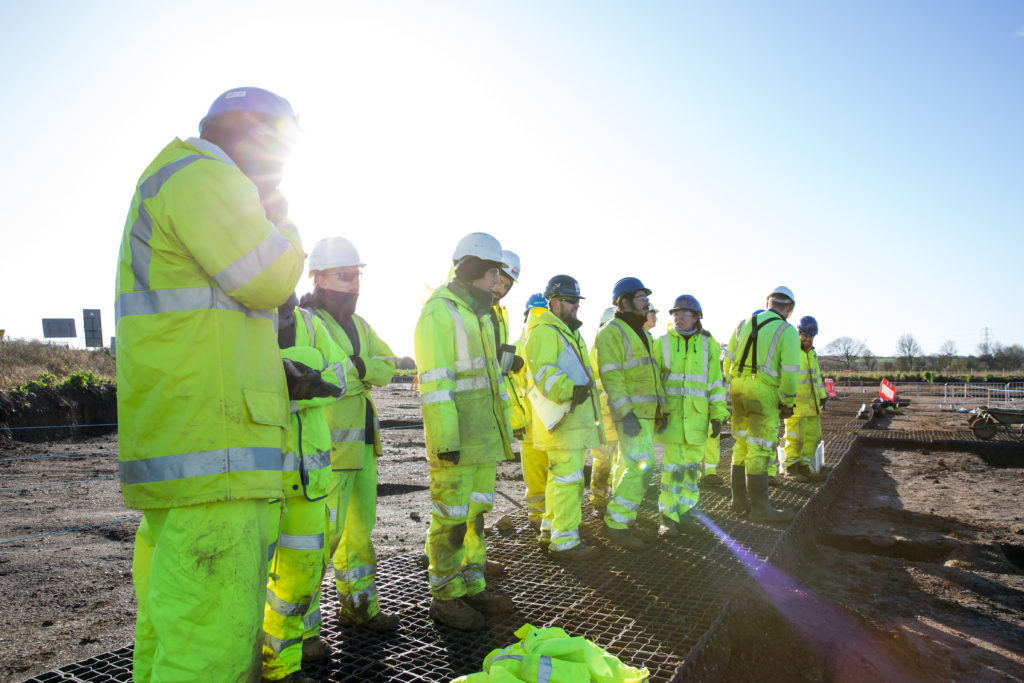As the excavations on one of the UK’s largest ever archaeological projects draw to a close, we now start the huge challenge of pulling the results together, to paint a more detailed picture of over 6000 years of history.
The archaeology programme of the A14 Cambridge to Huntingdon improvement scheme took place over two years, comprising over 40 separate excavations and covering around 350 hectares. It revealed one of the richest archaeological landscapes in the UK, with excavated features including:
- 3 Neolithic henge monuments. Henges were circular monuments built across Britain in the 3rd and early 2nd millennia BC, probably used as arenas for ritual practices and social gatherings
- 7 prehistoric burial grounds (barrows and cremation cemeteries), many of Bronze Age date (2nd to early 1st millennia BC)
- 15 Iron Age (c. 800 BC – AD 43) and/or Roman (AD 43-410) settlements, mostly farmsteads, but also what appears to have been a Roman agricultural supply depot, possibly with military associations
- 40 Roman pottery kilns
- 3 Anglo-Saxon settlements (5th to 8th century AD), the largest ever investigated in Cambridgeshire
- 1 deserted medieval village occupied from 8th to 12th century
- 2 post-medieval brick kilns
Given the sheer scale of the archaeological work it is not surprising that huge quantities of artefacts have been recovered, including 6-7 tonnes of pottery and about 8,000 registered finds (objects such as coins, brooches, ironwork etc.). This is in addition to almost 5 tonnes of animal bone, about 7,000 environmental samples and over 300 human burials (inhumation and cremation) of all periods.
All of this material is of crucial importance for our understanding of the archaeology. Analysis will help us to consider matters such as how people lived, what they ate, how their economies and societies worked and how they organised their spiritual lives. Wider questions will also be considered, for example what was the impact of the Roman conquest and how did the landscape change after the collapse of Roman administration?
In order to deal with this mass of material, we now have a team of over 30 specialists engaged in recording and analysis, in addition to many other professional staff working on site phasing, illustrations etc. We are just at the start of the post-excavation phase, and over the next year we will be undertaking an assessment to understand the nature of the archaeology and its potential to address research and outreach aims. This will be followed by a three-year programme of analysis, leading to multiple outputs, including research-driven academic books, books aimed at wider audiences and a range of digital media and other resources.
Throughout this time, we will be providing regular updates from specialists and others working on the material, and we hope you will join us on this exciting journey to reveal the story of this incredible landscape.
Join us on our journey!
- @A14C2H #A14Archaeology
- facebook.com/A14C2H/ #A14Archaeology
- Come to one of our community archaeology events
- Find out more about the A14C2H improvement scheme here
The archaeological programme for the Cambridge to Huntingdon improvement scheme is being carried out by A14 Integrated Delivery Team on behalf of Highways England.

0 Comments
Leave A Comment